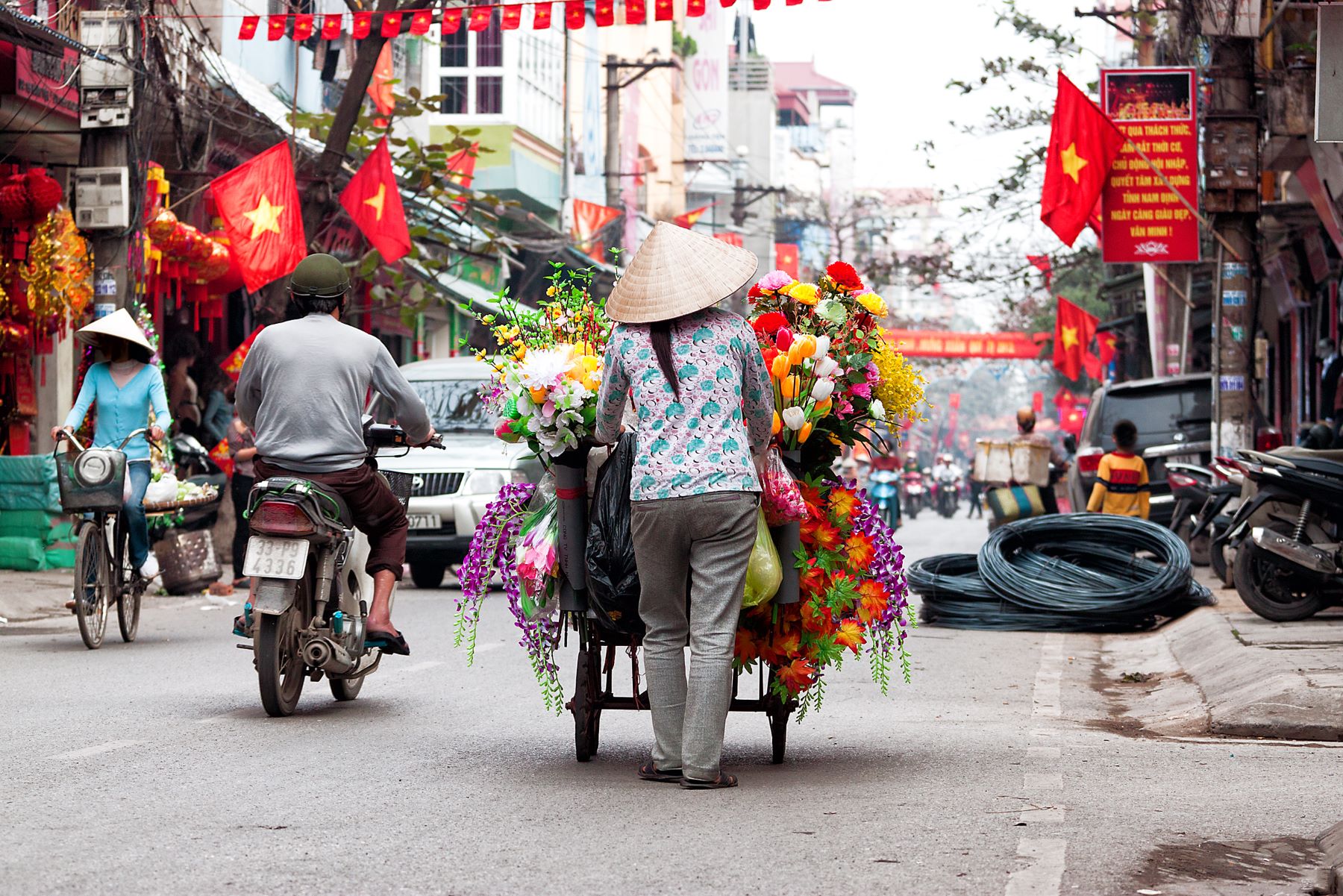The northern Vietnamese city of Hanoi is home to a plethora of intoxicating smells, colour and sounds. An hour after leaving the airport, a cacophony of noise erupts with the hooting of car horns and beeping of mopeds as they speed around in their droves like a scene from Quadrophenia. Chaos reigns but somehow there seem to be unwritten rules of the road ingrained in the locals as they meander freely and skilfully around each other.

The streets are lined with shops, street food sellers, stray dogs and little plastic chairs and tables that look like they are straight out of a kids club, but where adults sit outside to share in bowls of Pho (the local dish of noodles and meat in broth) amidst the wafting scent of lemongrass, ginger and lime.

The most popular mode of transport is the moped – a vehicle used to carry entire families with babies standing on laps watching life whizz by in a blur, young people off to work or to socialise and tradesman with their goods piled like skyscrapers behind them and miraculously not toppling over as they stop at traffic lights. Amongst all this I find myself being expertly manoeuvred through the intersection in a cyclo (a bicycle with the passenger carriage on the front) whilst the onslaught of traffic comes from all angles making their presence known with sharp toots of the horn.

The cyclo is the perfect way to see the Old Quarter and once off the main route, the roads narrow and the pavements brim over with wares from the small shops that line the streets interspersed with pagodas, Buddhist temples, French-Colonial architecture, coffee shops and small bars and restaurants. Each section of the Old Quarter is given over to specific professions, left over from the days when the original inhabitants arrived from their home towns and set up shop next to friends and families who shared their expertise. Silk makers, tailors, shoe makers, plumbers, electricians –you can find anything you might ever need and haggling is all part of the fun.

Away from all this there is a serious side to life in Ba Dinh Square in the French Quarter, where queues of people line up to pay their respects to their great former leader, Ho Chi Minh, who lies in state at the mausoleum, preserved in his own skin. This is a real tradition for the Vietnamese and many families make an annual pilgrimage to Hanoi to pay homage before wandering around the beautiful gardens surrounding his nearby home. The mausoleum was inspired by Lenin’s Mausoleum in Moscow and the Russians lent their expertise to the Vietnamese to ensure the right chemicals were used to perfectly preserve the body.

The most striking thing about Hanoi is the community spirit and feeling of happiness amongst those that live here. Family is of great importance and children play happily outside their parents’ shop with a seemingly invisible boundary they know not to cross. Toddlers learn to ride their bikes with stabilisers into the on-stream of traffic whilst caring older siblings run beside them, ever watchful. Not once did I hear a baby cry – more the laughter erupting from competitive games of chequers or chess under the shade of the Lan trees.
Modern life has overtaken this great city but the architecture, religions and culture from centuries past are still here to be explored. The new generation has been raised to respect the ancient traditions and pass them on to generations to come.












